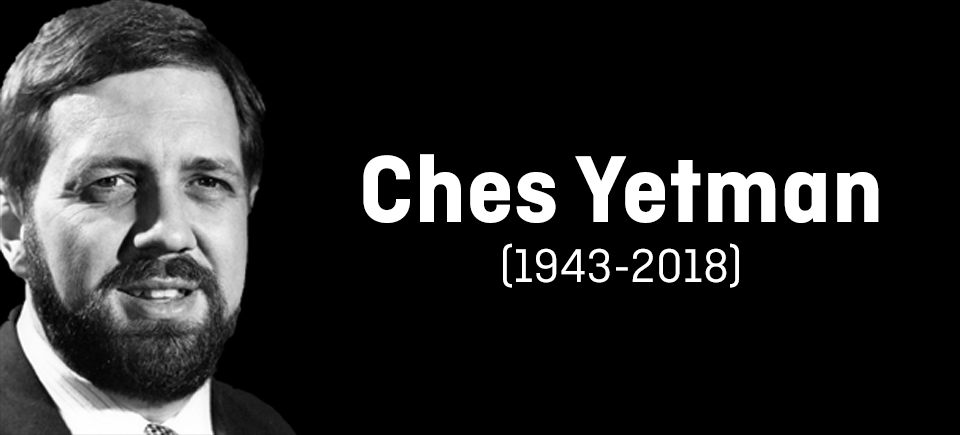
No Longer Forgotten: Making Space for Métis Stories in the Classroom
No Longer Forgotten: Making Space for Métis Stories in the Classroom
Places Not Our Own invites students to learn about the Métis “road allowance people.” Through the power of storytelling, the film acts as an entry point for exploring the often-untold history of the Métis struggle for recognition, and fosters understanding of the continued impacts of colonization on Métis.
Places Not Our Own , Derek Mazur, provided by the National Film Board of Canada
The Power of Stories
Piihtikway! Natoohtahk! Come in and listen! Come sit at the table, visit for a while and listen to a story.
Stories. There were always stories. When I reflect on my childhood and my time spent fishing and berry picking, sewing and beading, sitting around the kitchen table, attending special family gatherings—happy or sad—there were always stories. Stories that fostered a sense of belonging; placing me within land, family and community. They helped me make sense of my world, my history and my identity as Métis. Stories spoke to my heart, my head and my spirit, telling me who I was, and to whom I belonged. Stories helped make me whole.
When Stories Remain Untold
In school, the stories were different. The only stories I heard in my classrooms were confusing and tainted with unfamiliar characters or plot lines. Riel as traitor? Métis just fading away after 1885? These were not the stories I knew. Throughout my formal education from grade school through university, the stories of Métis Peoples were incomplete, inaccurate, or not told at all.
Reconciliation Through Stories
In this time of reconciliation, educators sit with the Calls to Action and are coming to know what reconciliation might look like in their classrooms. They may not know the devastating history of colonization themselves, or may carry fear of “getting it wrong” if they introduce Métis stories. The trepidation or discomfort in sharing a story that was not supposed to be known is understandable. That is why NFB films like Places Not Our Own (Derek Mazur, 1986) are important. One of the films in the Daughters of the Country series, it tells the story of the Métis struggle to survive in the face of land theft, waves of immigration and systemic racism. Educators and students are introduced to the Métis’ dark times as forgotten people and road allowance people. An important Métis story is brought to life.
For educators and non-Métis students, such films offer engaging content and act as an entry point to learning about Métis history, culture and perspectives. It can help to dismantle misconceptions and open the door to further learning. Respectful relationships are key to reconciliation, and relationships cannot happen without empathy and understanding. Students can reflect on the enduring sentiment shared by the mother in the film—“We’re different, not better”—within the current Canadian context.
For Métis students, the film can provide a mirror in which they can see themselves reflected, reaffirming the stories they learned from family and community. For those whose community connections have been severed, the film can fill in some gaps and provide some context for the loss of connection. For some, it will reaffirm their stories. For those who do not know their stories, it will shine some light into the dark corners and invite further exploration. If space had been made for the film in my school experience, it would have been a powerful validation of my family’s story and my identity. Seeing iconic Métis actress Tantoo Cardinal featured in my school lessons would have told me Métis stories are important and worth learning.
As a student in school, I did not know the power of seeing my story reflected. Educators looking for ways to authentically and respectfully bring Métis voice and perspective into their classroom can make space with films like Places Not Our Own. Exploring the film presents an opportunity to ensure Métis students know that their stories—past, present and future—matter. Young Flora’s sentiment that as Métis, “we never had any chances,” will not be part of their story.
Questions to Consider
- How are colonial attitudes toward Métis represented in the film? How do such attitudes manifest themselves in contemporary Canada?
- What key events lead to the Métis being known as the “road allowance people”?
- How does the film illustrate the experiences of Métis as the “forgotten people”?
- What method was primarily used to displace Métis from their homelands?
- How does forced relocation and displacement from land shape contemporary contexts of Métis?
- How does the film illustrate Métis resistance and resilience?
- What are the stories of the land on which your community exists? What stories live from the time before the land was opened to settlement colonization? Who carries these stories? How can you learn the stories?
- How can the sharing of stories help dismantle misconceptions?
- How can educators make space for respectfully including everyone’s story?
Pour lire cet article en français, cliquez ici.
Cheryl (Henderson) Devin is Métis with family ties across the Métis homeland, including Edmonton, Fort Saskatchewan and Andrew. Her teaching career spans more than 30 years, including time spent working with the Alberta Teachers’ Association Walking Together Indigenous professional development team and as a First Nations, Métis and Inuit Education Consultant. She continues to reflect on her responsibilities as a Métis woman and works toward reclamation and resurgence of Métis language, culture and identity for herself, her children and her future grandchildren.
Discover more Mini-Lessons | Watch educational films on NFB Education | Subscribe to the NFB Education Newsletter | Follow NFB Education on Facebook | Follow NFB Education on Twitter | Follow NFB Education on Pinterest
